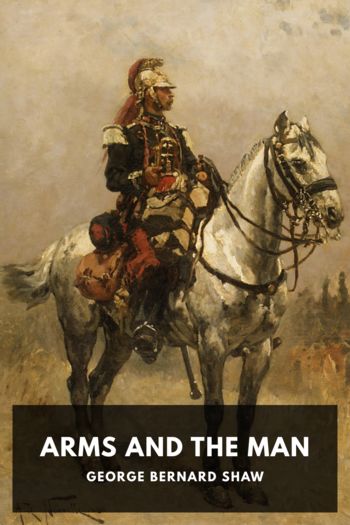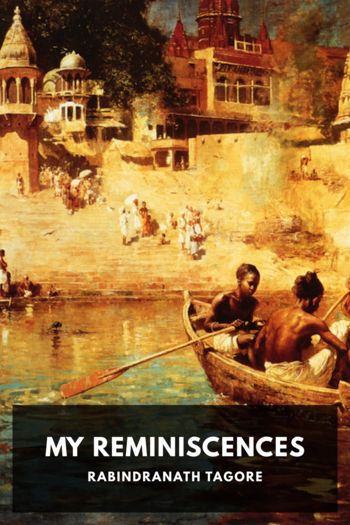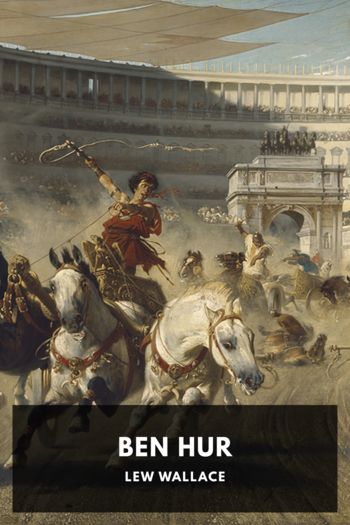Genre Other. Page - 282

Description
Selma Lagerlöf was a Swedish author, who, starting in 1891 with The Story of Gösta Berling, wrote a series of novels and short stories that soon garnered both national and international praise. This led to her winning the 1909 Nobel Prize for Literature “in appreciation of the lofty idealism, vivid imagination, and spiritual perception that characterize her writings,” the first woman to do so. She happily wrote for both adults and children, but the same feeling of romantic infatuation with the spiritual mysteries of life runs through all of her work, often anchored to her childhood home of Värmland in middle Sweden.
The collection brings together the available public domain translations into English, in chronological order of their original publication. The subjects are many, and include Swedish folk-stories, Biblical legends, and tales of robbers, kings and queens, fishermen, and saints. They were translated by Pauline Bancroft Flach, Jessie Brochner, and Velma Swanston Howard.

Description
In the middle of the 1885 Serbo-Bulgarian war, an enemy soldier escapes a cavalry charge by climbing up a drainpipe into Raina Petkoff’s room. Raina is the daughter of one Major and engaged to another, but she chooses to save the soldier’s life by concealing him.
Arms and the Man, named after the opening lines of Virgil’s The Aeneid, is a play that humorously deals with the hypocrisy of humanity and the stupidity of war. It was among George Bernard Shaw’s first commercial successes, and was included in a collection of plays he referred to as Plays Pleasant, along with Candida, You Never Can Tell, and The Man of Destiny. Having coined the term “chocolate soldier,” the play has been staged multiple times in London’s West End and on Broadway, and has been adapted into operetta and film.

Description
Harriet Jacobs was born a slave in North Carolina, but, in her words, didn’t realize it until her father died when she was six years old. Six years later, when her mistress died, she was bequeathed to the mistress’ granddaughter, thereby coming into the household of the mistress’ lecherous son. Several years later she escaped, only to have to hide for seven years in a cramped garret that did not allow her to stand or sit up. She was finally able to make her way north, where she was reunited with her children. Many years later, after narrowly avoiding capture multiple times due to the Fugitive Slave Law, her employer purchased her freedom.
Jacobs, writing as Linda Brent, tells the riveting story of her life in the South as a slave. She brings an unflinching eye to “good” masters and mistresses who nevertheless lie to, steal from, and continually break promises to their slaves, and to bad masters who beat and kill their slaves for no particular reason. Even in the North, after her escape, she is disappointed to find prejudice and degrading treatment for blacks. After having been convinced to write down her story, it took years to find a publisher who would print it. It was finally made available to the public just a few months before the shots at Fort Sumter that began the Civil War.

Description
Rabindranath Tagore, sometimes referred to as the Bard of Bengal, was a poet, composer, and artist active in the latter half of the 19th century and the first half of the 20th century. His poetry had a profound impact on Bengali literature—so much so that in 1913 he became the first non-European to win the Nobel Prize in Literature.
Today Tagore is recognized for transforming Bengali art, moving it away from its classical forms by embracing the Bengal Renaissance. Though his artistic output spanned many disciplines, his most famous is perhaps Gitanjali, his collection of poems that he himself later translated to English. His impact on Indian and Bengali letters can be exemplified by the fact that two of his compositions were chosen as national anthems—“Jana Gana Mana” for India, and “Amar Shonar Bangla” for Bangladesh—and that the Sri Lankan national anthem was inspired by his work.
In these autobiographical sketches Tagore gives us windows into his childhood, his youth, and his blossoming as a writer and as a lyricist. He stresses that this is not an autobiography, but more like a palimpsest of memories: glimmers and shadows that illustrate his artistic development, not a strict record of his life.

Description
The Chessmen of Mars, the fifth installment in the Martian series, was originally serialized in six parts in Argosy All-Story Weekly before being published as a novel in 1922. It introduces Tara, Princess of Helium, the headstrong daughter of John Carter, the Warlord of Mars. Just like the rest of the novels in the series, this one is packed with imaginative characters and locations. In true Barsoomian fashion, Burroughs regales us with an action-packed adventure: planet-shaking storms, daring swordfights, horrific dungeons, complex alien cultures, and wild escapes. While the story may be considered a standard pulp adventure, it also introduces a bit of philosophy by exploring the connection between the mind and the body.
Of special note is Jetan, or Martian chess, which holds a central place in the storyline. Burroughs includes an appendix so that interested readers may play the game themselves.

Description
Sir and Lady Chiltern are the picture of responsibility: he a member of the House of Commons, she a member of the Women’s Liberal Association. When Mrs. Cheveley arrives in London, she brings with her a letter that threatens to ruin Sir Chiltern forever—his whole life threatens to come crumbling down. The following twenty-four hours are filled with theft, blackmail, farce, and biting social commentary.
An Ideal Husband was first performed in 1893 at the Haymarket Theatre, and it was immediately successful. On April 6th, the same day it transferred to the Criterion Theatre, Oscar Wilde was arrested for gross indecency, and his name was removed from the play. Wilde revised the play for publication in 1899, taking steps to add written stage directions and character descriptions in order to make the work more accessible to the public. Today it’s Wilde’s second most popular play, after The Importance of Being Earnest.

Description
Although many readers might associate the term “fairy tales” with the Germanic or Celtic folk tale tradition—like in the stories collected by the Brothers Grimm—countries like India have their own rich history of fairy tales. Many of these tales, infused with a local flavor, bear a striking structural and thematic similarity to those with which Western readers are accustomed: moral allegories, talking animals, gambling incidents, and the like. Joseph Jacobs has carefully selected 29 fairy tales from the Jatakas, the Fables of Bidpai, the Tales of the Sun, the Baluchi Folktales, the Folktales of Kashmir, and other Sanskrit sources. These stories are a humorous and imaginative showcase of India’s rich fairy tale tradition.
Joseph Jacobs was an Australian folklorist who devoted most of his career to collecting fairy tales from around the world. His collections on English fairy tales have immortalized stories such as “Jack and the Beanstalk,” “Goldilocks and the Three Bears,” “The Three Little Pigs,” “Jack the Giant Killer” and “The History of Tom Thumb.”

Description
Charlotte Perkins Gilman, most famous for her short story “The Yellow Wallpaper,” wrote Women and Economics in 1898, at a time when the roles of women in society were already undergoing radical change: women were entering the work force in large numbers, the suffrage movement was agitating for the vote, and young women were looking for a new definition of their place other than as a wife or mother.
The book takes the position that humans are the only species in which the female depends on the male for her survival, and that this arrangement must change for the human race to continue to be successful. Gilman argues for the evolution of marriage, family, home life, and what she calls the sexuo-economic relationship between men and women.
Although she was in demand as a lecturer and writer, Women and Economics was the first book-length work to consolidate her views. As a feminist text, it’s significant not necessarily for its profundity or for its appeal for women’s rights, but rather for its application of social Darwinism, espousing the theory that the roles played by women inevitably evolve and that the gendered division of labor produces warped human beings of both sexes. Its popularity was also helped by its accessibility—as one of her critics stated, “it stirs no deep reverberations of the soul … but you can quote it, and remember its points.”
As suffragism progressed and first wave feminism began to fade, Gilman’s ideas were somewhat forgotten. But as feminism resurged in the 1960s, her work was rediscovered and interest rebounded in this groundbreaking feminist who played an important role in shaping public opinion, disseminating radical ideas, and encouraging women (and men) to change their thinking about gender roles.

Description
Katharine Susannah Prichard was born in 1883 to Australian parents then living in Fiji, but she grew up in Tasmania, lived for a while in both Melbourne and London before finally settling in Western Australia. She was one of the co-founders of the Communist Party of Australia in 1921, and her status as a communist and a female writer led to her being frequently under surveillance and harassment by the Australian police and other government authorities.
She wrote The Black Opal in 1921, and the novel focuses on the very close-knit opal-mining community living and working on Fallen Star Ridge, a fictitious location set in New South Wales, Australia. Life is hard for the miners as their fortunes rise and fall with the amounts and quality of black opal they can uncover. Black opal is a beautiful mineral with fiery gleams of color, much valued for jewelry. Finding productive seams of such opal is a matter of both hard work and good luck.
The novel is a well-drawn study of the relationships of the people living on the Ridge, and the two main characters are portrayed with clarity: Michael Brady, an older man much respected by the other miners for this knowledge and ethical approach, and Sophie Rouminof, a beautiful teenage girl who is the darling of the camp but who abruptly runs away to America after being disappointed in love.
Despite the difficulties the individual miners face, there is a community spirit and an agreement on basic values and principles of behavior at the Ridge. But this community of shared endeavor is eventually jeopardized by the influence of outsiders, in particular an American who wishes to buy up the individual mines, operate them under a company structure, and simply pay the miners a salary. This conflict between capitalism and honest manual labour becomes one of the most important themes of the work.

Description
Judah and Massala are close friends growing up, though one is Jewish and the other Roman. But when an accident happens after Massala returns from five years in Rome, Massala betrays his childhood friend and family. Judah’s mother and sister are taken away to prison, and he is sent to a galley-ship. Years later, Judah rescues a ship’s captain from drowning after a ship-to-ship battle, and the tribune adopts him in gratitude. Judah then devotes himself to learning as much as he can about being a warrior, in the hopes of leading an insurrection against Rome. He thinks he’s found the perfect leader in a young Nazarite, but is disappointed at the young man’s seeming lack of ambition.
Before writing Ben-Hur, Lew Wallace was best known for being a Major General in the American Civil War. After the war, a conversation with an atheist caused Wallace to take stock of how little he knew about his own religion. He launched into what would be years of research so that he could write with accuracy about first-century Israel. Although Judah Ben-Hur is the novel’s main character, the book’s subtitle, “A Tale of the Christ,” reveals Wallace’s real focus. Sales were only a trickle at the beginning, but it soon became a bestseller, and went on to become the best-selling novel of the nineteenth century. It has never been out of print, and to date has inspired two plays, a TV series, and five films—one of which, the 1959 Metro-Goldwyn-Mayer epic, is considered to be one of the best films yet made.